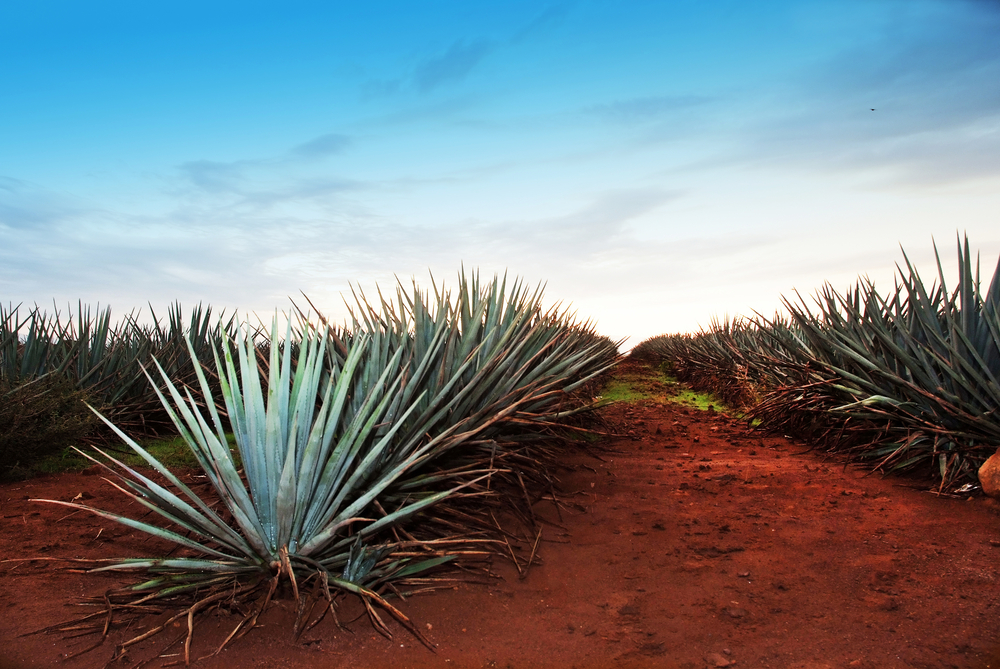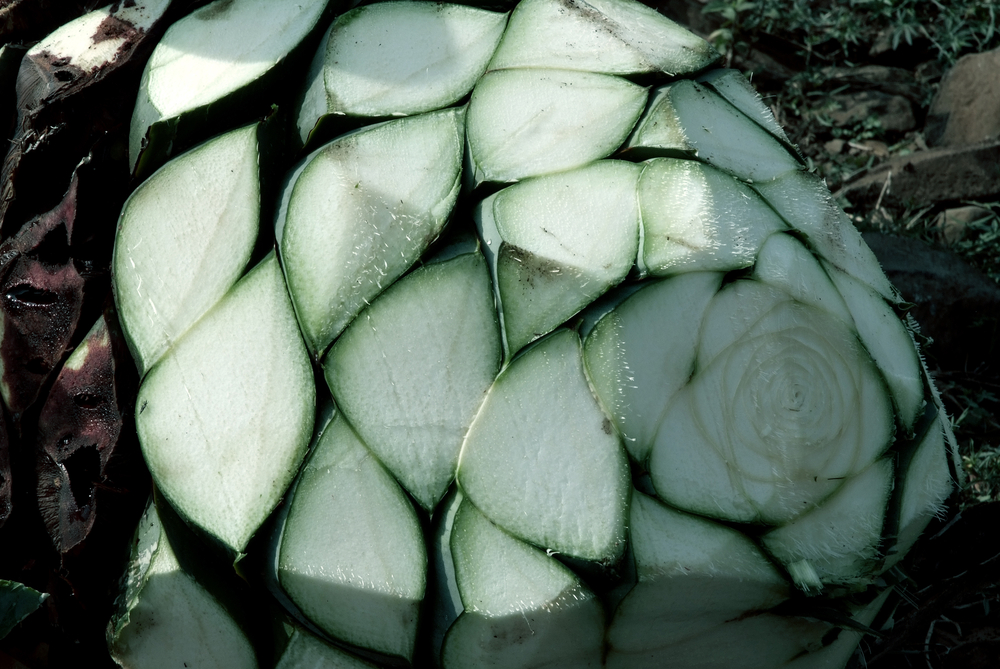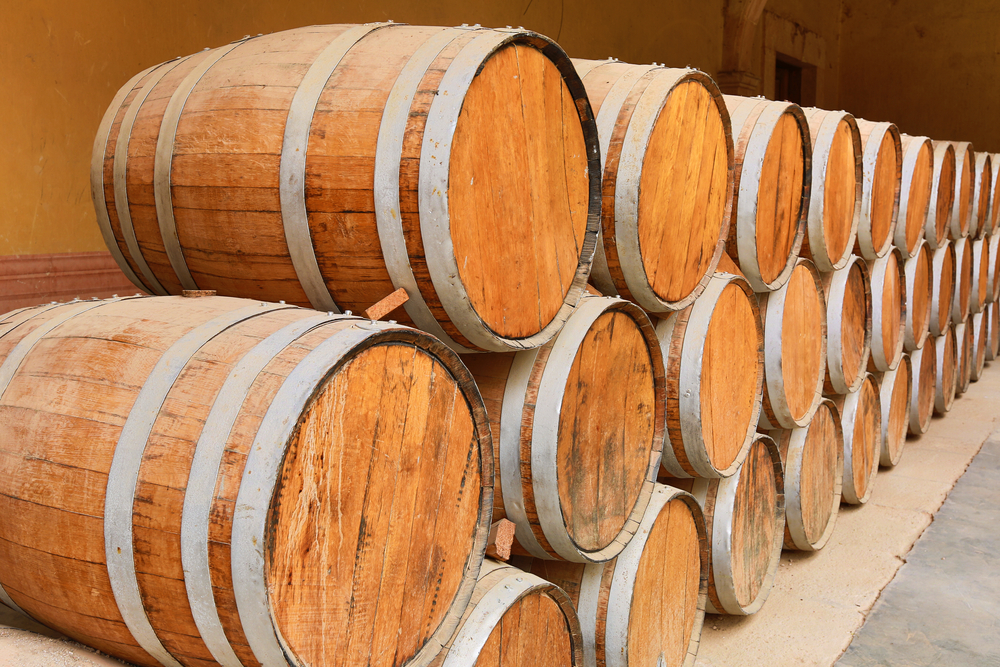
When Cheech Marin got into the alcohol game he wanted to do something special. He didn’t just want to peddle another wine or beer that wouldn’t mean anything to him culturally. Instead, he went for something that he could connect to on a deeper level: mezcal.
It wasn’t all about history for Cheech, though. He was also excited about mezcal’s taste. He wanted to surprise people with a liquor as smoky as his film resume. The result? Tres Papalote Mezcal — which is unusually smooth, especially for a spirit with 46% alcohol, but maintains mezcal’s trademark flavors.
“We’re in a changing time when it comes to flavor,” Marin told Uproxx. “We’re in a generation with both millennials and older people looking for big tastes — so I feel like it’s a wide open time for mezcal.”
We asked the film legend for help navigating this lesser known of the agave-based spirits.
https://www.instagram.com/p/BJJRYAbDIwQ/
WHAT IS MEZCAL?

Marin was first approached about selling an alcohol a few years ago, when a team of investors pitched him on wine. When he passed, an associate asked “how about a tequila?” Marin wasn’t impressed, telling us, “Everyone’s doing tequila out there. But it crossed my mind, ‘Hey there’s not a lot of mezcal out here and people hardly know what it is.'”
He’s right, in a world in love with tequila, mezcal’s unique history is often lost — which is a shame, because it’s fascinating:
Ages ago, when the Spanish Conquistadors landed in Mesoamerica they were greeted with a fermented, slightly alcoholic drink called pulque. The fermented drink was thick, creamy, and a little sour — not really the Spaniards cup of tea. But the Spaniards had shown up with pot stills to make spirits from sugar cane, just as they’d already started to do in the the Caribbean. Versions of this distilled cane drink still exist around the Caribbean, South America, and Central America, called aquardiente (literally fire water).
But Mexico wasn’t covered in sugar cane, it was covered in agave. And when the rum ran out, they started tinkering with the local pulque and ended up inventing mezcal. Later, Mezcal got big production boost when Spain’s crown forbade their colonies from grape-based alcohol production, so as not to disrupt vineyards and producers back home. Suddenly, the spirit became a major focus of growers and distillers throughout Mexico.

HOW IT’S MADE
https://www.instagram.com/p/BLe-5E2D5an/
Once Marin settled on mezcal, he found the battle to have people take note to be a little harder than he expected. “People go ‘Oh, I like your tequila!’ and, man, I have to always correct them, ‘No … It’s mezcal.’ That’s because mezcal doesn’t have a face, you know. There’s nobody to speak for it — there’s no George Clooney saying ‘Hey! Drink this.'”
He sees his own role as a sort of mezcal ambassador, here to tell people: “Number one, it doesn’t come with a worm. And number two, it doesn’t taste like tequila.”
What separates mezcal is the plant involved in the mash, distillation, and aging processes. The spirit began as a small batch production and remains largely that to this day. Originally, it was made from almost any agave plant — either wild or cultivated. This means that tequila, which is made solely from blue agave, is a type of mezcal.
The agave plants are generally grown for 12-15 years before the piña, or heart, of the plant is harvested by hand. Next, the piñas are loaded into a large pit oven heated with hot stones then covered up to smoke and roast for about three days. This is another way mezcal differs from tequila — which is roasted in clay ovens above ground, sans smoke (generally).
Once the piñas are properly roasted a mash is made by crushing the still hot agave with a massive stone mill (traditionally pulled by a horse). That mash is transferred to a barrel and water is added. This is where the initial fermentation takes place. The mash is filtered and transferred to a pot still (or a clay still in some cases) and distilled twice to get the alcohol content to around 55 percent.
At this point, there are some interesting varietals that enter the mix. First, during the fermentation and distillation spices, fruits, herbs, and even chicken breasts can be added to make different ‘flavored’ mezcals. As with any alcohol, mezcal doesn’t necessarily have to be aged. The inherent smokey notes are forged in the pit while roasting. But, again, as with most alcohols, the aging of mezcal is where the smoothness comes from.
A quick aging primer:
‘Dorado’ is un-aged mezcal with a color additive giving it a golden hue. The coloring agent is often added to mezcals that aren’t pure — which mean they have at least 80 percent agave and 20 percent other grain spirits or other agave distillates. Generally speaking, varietals above a ‘Dorado’ are going to be 100 percent agave. Always peruse the label to figure out what you’re dealing with when it comes to agave purity.
‘Joven’ means un-aged/young mezcal.
‘Reposado’ or ‘añejado’ are aged up to nine months in a barrel.
‘Añejo’ is barrel-aged generally from 18 months to three years (sometimes you’ll find an Añejo that’s only been aged for 12 months).
If an ‘Añejo’ has been aged 4 years or more, it’s always 100 percent agave.
About 30 species of agave have been certified to make mezcal in seven Mexican states per the government’s appellation ordinance. Oaxaca is the main production center with 570 out of the 625 mezcal distilleries in Mexico. You’ll also find mezcals from Durango, Guanajuato, Guerrero, San Luis Potosí, Tamaulipas, and Zacatecas.
Cheech Marin’s Tres Papalote is the perfect example of a boutique and artisanal mezcal that champions quality over quantity. Marin proudly told us that “the distillers use a third distillation for purity reasons.” He continues on that “Tres Papalote only uses a wild agave called ‘cupreata’ which only grows in Guerrero” and that the mezcal is still handmade. That third distillation is reminiscent of Irish whiskey and gives this mezcal a refinement that mellows the alcohol taste, making it a smokey, smooth ride.

HOW TO DRINK MEZCAL
Mezcal is a versatile spirit. It can be white and fire-y or dark and smokey. We asked Cheech what he loves about it and he’s on the smokey train, “I love that smoky taste and it blends well, you know. It’s a great cocktail drink and I’ve had them in a lot of different combinations.”
Mezcal has started to take cocktail bars by storm, particularly over the last five or so years. Mixologists are switching out tequilas for mezcal in margaritas — adding a new dimension to the old standard.
We let Cheech in on our favorite mezcal recipe at the moment: the Mezcal Old Fashioned.
That’s a bar spoon of agave syrup with three dashes of Angostura bitters and a bar spoon of soda water all mixed in the bottom of a rocks glass. Next we add in six ounces of very dark and smokey Añejo mezcal and slowly add ice and stir until well-chillled (at least 90 seconds). Add the oily zest of a lime rind and drop it in and serve.
Cheech replied with long “Ooooh…yeah, man.” Then traded his favorite recipe at the moment:
“I’ve been making this mezcal mule lately, you know. I just replace the vodka with mezcal! And, man, people can not get enough of that!”
https://www.instagram.com/p/BOYEjoVhIvq/
Marin loves mezcal because, as he says: “It blends really well, but it’s also a wonderful sipping drink, or chugging depending on your disposition.”
You can switch out whiskey with mezcal to add new flavor profiles to manhattans, sazeracs, or even a horse’s neck. Or you can take it as a traditional shot with a wedge of orange and a little sal de gusano (that’s fried, dried, and ground larvae). So many options, so little time to drink.
Before letting Marin go, we had to ask his thoughts on the current climate around US-Mexico relations. Now that we’re in the thick of an administration driven by “America first” attitudes and isolationism, many are worried that imports from Mexico are at risk.
“You know I don’t think it’s going to be a problem,” he replied. “I mean that’s my personal opinion…but, Mexico is our the largest trading partner and we’re going to come to the recognition that they’re also our ally.”
We hope he’s right. Until that optimism bears out, we’ll have mezcal to drown our worries.
https://www.instagram.com/p/BO0PpOolt7r/
https://www.instagram.com/p/BRb-J9WgAmd/
https://www.instagram.com/p/BQ4JPyHgKmx/
https://www.instagram.com/p/BRaszXiAexv/






